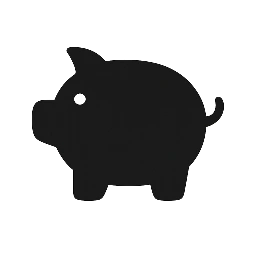
Take control of your money, one cent at a time
What Is Budgeting and Why It Matters
Budgeting isn’t a punishment; it’s about empowering yourself with a plan. In a country where food costs, housing prices, and seasonal bills seem to creep higher every year, a budget helps you face it all with confidence, especially when your paycheque is not on the rise. Consider your budget your road map to getting to where you want to go.
It’s your map to:
- Spending wisely
- Staying out of debt
- Preparing for surprises
- Reaching your goals without guesswork
How to Build a Monthly Budget in Canada
1. Know Your Income
Add up:
- Net salary (after tax)
- Side hustles or freelance work
- Government benefits (Canada Child Benefit, GST/HST credit, GIS, etc.)
- Any pensions or investment income
If your income fluctuates, go with a conservative average. Look at all your sources of income for the last year and average 10% less to be safe.
2. Track Your Expenses
Break it down:
- Fixed: Rent, phone, insurance, internet, hydro, gas, mortgage,
- Variable: Groceries, gas, dining, clothing, personal grooming, babysitting, prescriptions
- Occasional: Birthdays, vet bills, repairs, Christmas, travel,
- Debt & Savings: Student loans, emergency fund, RRSP
Use the Canada Budget Planner, Mint, or a spreadsheet to simplify the process.
3. Set Goals That Matter to You
Goals breathe life into your budget. Try:
- Short-term: Save $500, pay off the credit card
- Medium-term: Buy a used car, travel
- Long-term: Own a home or retire early
Tip: Use the SMART method—Specific, Measurable, Achievable, Relevant, Time-bound. Set a dollar amount and assign it for future use.
4. Pick Your Budgeting Style
| Method | Best For |
|---|---|
| 50/30/20 Rule | Beginners |
| Zero-Based Budget | People who love precision |
| Envelope System | Cash users or impulse spenders |
| Pay Yourself First | Savers who automate easily |
Budgeting Styles Explained
Understanding the various budgeting methods may help you choose one that fits your lifestyle, mindset, and financial goals. Here’s a breakdown of the most popular styles:
50/30/20 Rule
A simple framework that divides your after-tax income into:
- 50% for needs: housing, groceries, transportation
- 30% for wants: dining out, entertainment, hobbies
- 20% for savings and debt repayment
Beginners who want structure without complexity.
Zero-Based Budgeting
Every dollar you earn is assigned a job—income minus expenses equals zero.
- You plan for every expense, savings goal, and debt payment
- Nothing is left unaccounted for
Best for: People who want total control and love detailed planning.
Envelope System
You divide your money into physical or digital “envelopes” for each spending category.
- Once an envelope is empty, no more spending in that category
- Great for curbing impulse purchases
Visual learners and those who prefer cash or strict limits.
Pay Yourself First
You prioritize savings before spending.
- Automatically transfer a set amount to savings when you get paid
- Spend what’s left on needs and wants
Best for: Savers who want to build wealth without tracking every expense.
Priority-Based Budgeting
You rank your financial goals and allocate money accordingly.
- Funds go to the most important goals first
- Lower-priority items get what’s left
Best for: Goal-oriented individuals with limited resources.
5. Stay Accountable With Tools
Apps like KOHO, YNAB, or Credit Karma help keep things on track. Printables and spreadsheets are perfect if you prefer pen-and-paper planning.
Budgeting Tips Just for Canadians
- Use Flipp or Flashfood to score grocery deals
- Max out PC Optimum, Scene+, and Air Miles rewards
- Plan for seasonal expenses (like heating, back-to-school)
- Treat budgeting as self-care, not punishment
- Set reminders to check in with your budget monthly
- Don’t forget cashback apps like Checkout 51, Caddle and Receipt Hog.
Sample Monthly Budget #1: Family of 3 in Toronto
| Category | Amount |
|---|---|
| Net Income | $5,500 |
| Housing | $2,000 |
| Groceries | $700 |
| Childcare | $600 |
| Transportation | $400 |
| Utilities | $250 |
| Insurance | $200 |
| Savings | $500 |
| Debt Repayment | $200 |
| Entertainment | $150 |
| Miscellaneous | $100 |
| Total Expenses | $5,100 |
| Remaining | $400 |
Sample Monthly Budget #2: Canadian Senior (Age 75+, Max CPP/OAS/GIS)
| Category | Amount |
|---|---|
| Income | |
| CPP (Max) | $1,433.00 |
| OAS (Age 75+) | $800.44 |
| GIS (Max) | $1,086.88 |
| Total Income | $3,320.32 |
| Expenses | |
| Rent | $1,200.00 |
| Groceries | $400.00 |
| Utilities & Internet | $200.00 |
| Transportation | $150.00 |
| Medications & Health | $150.00 |
| Insurance | $100.00 |
| Entertainment | $100.00 |
| Clothing & Personal | $70.00 |
| Gifts & Donations | $50.00 |
| Miscellaneous | $100.00 |
| Total Expenses | $2,620.00 |
| Remaining Balance | $700.32 |
These examples show that budgeting looks different depending on where you are in life, and that’s okay! Your budget evolves as you do.
Download a Free Budget Tracker
While we’re putting the final touches on The Common Cents Budget Blueprint, you can get started today with Mr. CBB’s Canadian Budget Binder—a free toolkit with 51 printable pages for income, expenses, savings, debt, grocery planning, and more.
Final Thoughts
Budgeting isn’t about tracking every cent; it’s about spending with intention, planning with purpose, and feeling empowered every step of the way. Your budget should support your values, reflect your goals, and grow with your life. It will be a forever-changing plan that needs to be re-evaluated on a regular basis.
You deserve financial peace, and your budget is how you build it.
📥 Stay in the Loop + Get Your Free Budget Blueprint
Want even more tools to help you make smart money moves? 🎯 Subscribe to the Common Cents Mom newsletter and be the first to receive:
- 💜 Your exclusive copy of The Common Cents Budget Blueprint (coming soon!)
- 🌿 Tips and templates for saving, spending, and living frugally in Canada
- 🎉 Early access to printable guides, worksheets, and freebies


Leave a Reply